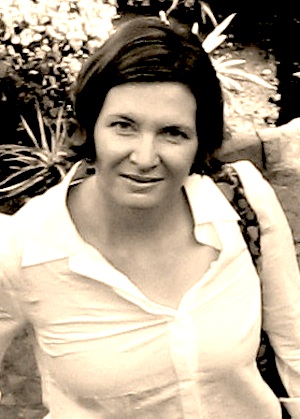
| Jacket 40 — Late 2010 | Jacket 40 Contents | Jacket Homepage | Search Jacket |
This piece is about 4 printed pages long.
It is copyright © E. Tracy Grinnell and Jacket magazine 2010.
See our [»»] Copyright notice.
The Internet address of this page is http://jacketmagazine.com/40/at-grinnell-tracy.shtml
Back to the A Tonalist feature Contents list
Part III:
Where heat
or anarchy, beat
affinities animate
the animal, lying
, residue of my foreign tongue
gasps cloister
my armory, the crowds
, sacrificial birds, render
re-member
what thought, was flying
turreted my
contrary feeling
myth itself
armor, a name in name
my own, in name
travels where
, no body
letters alone
proliferate
I, my letters
in absence of
fastening fast, furied
lambs for
loudening illusion
, fall falsely
how else traverse
, in loudening
howls the rendered
animal,
darkest, darkening
refraction, our
how else
stand, walk, murmur, think
, grieve?
Part IV:
tongues, I
throttle among
, my
limbs are, thumbs
phantom-fleeing, succumbing
, upon reflection
shots rung out
in lines, of image-
shapes
convictions made, of stones
, pebbles, unturned, the urns
burn
follow my,
city, pursue
, body-figures
, cut and calloused
my, pyre
flood, swallows
, gone
messages slant from
rubble, trapped just, quartets
, as if,
the end of time
disaster’s animals
restrained, in rooms
facing
whatsoever the dark,
earth, loves
returns, from it
every front line, rendered
lost what’s, all
is, what I lay
, here
the walls shall have it all
cloaked in songs, the brawls
hereafter, the place, I
, no more identify, than love, I
the undersigned
NOTE:
Helen, A Fugue is structured in parts, which follow a pattern of beats (in the theatrical sense): eight groups of four. Parts may be assigned to one or two voices, since they mirror one another. It works as a palindrome:
Part I Part II Part III Part IV Part IV Part III Part II Part I
8421
4218
2184
1842
2481
4812
8124
1248
In this excerpt, Part III is from the first half of the palindrome and Part IV is from the second half.

E. Tracy Grinnell
The beats are indicated by “stanza” breaks and these spaces should be observed as silences. Commas and caesuras should be taken very literally as pauses within beats, so that a comma or caesura (or both) at the beginning or within a beat is a rhythmic indicator to the reader. The duration of the silence indicated by commas and caesuras can be determined freely but should be consistent relative to one another, and the beats.
This note is excerpted from “Notes toward a performance of Helen, A Fugue”